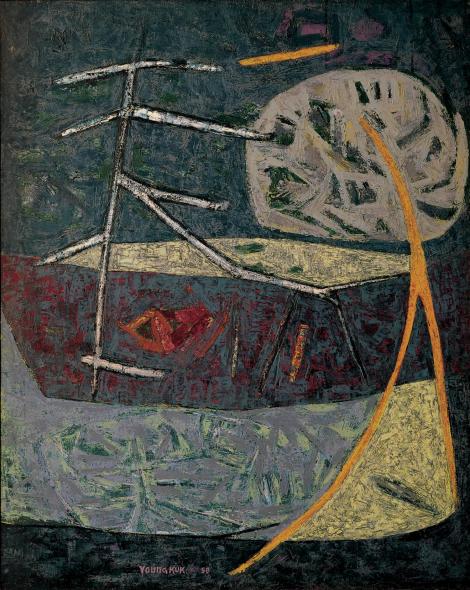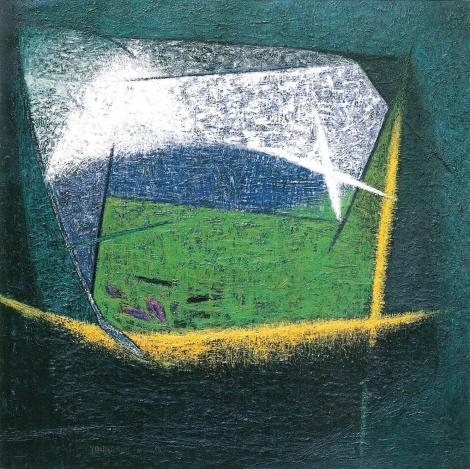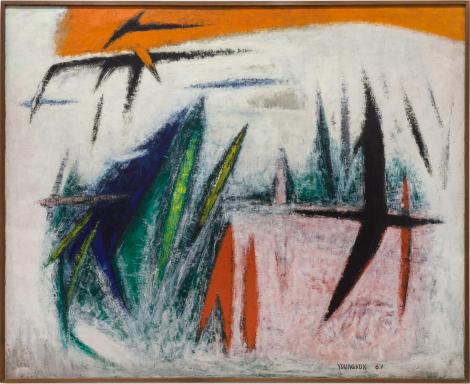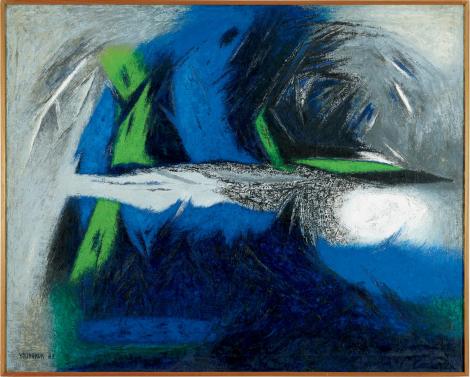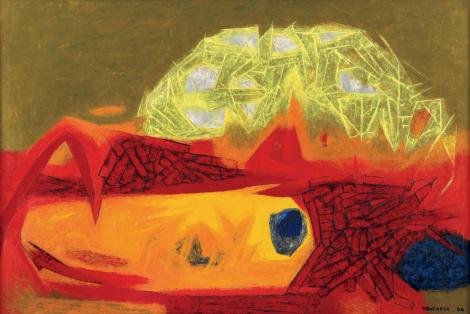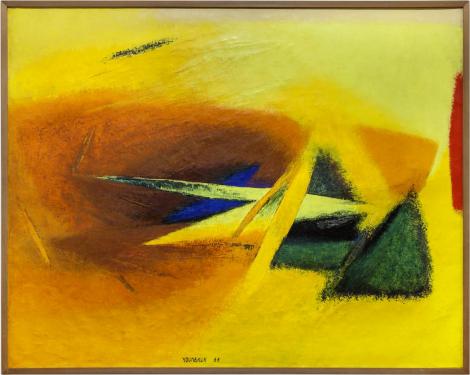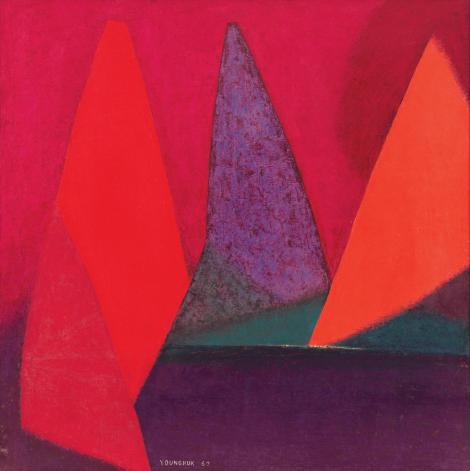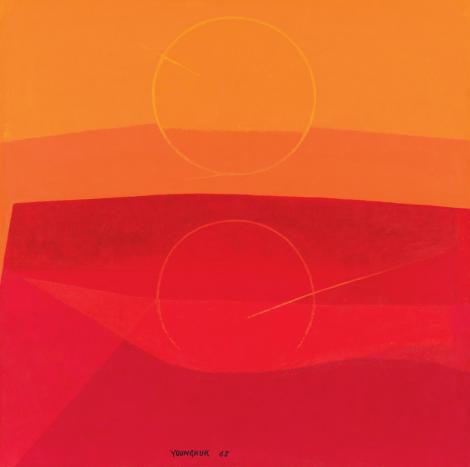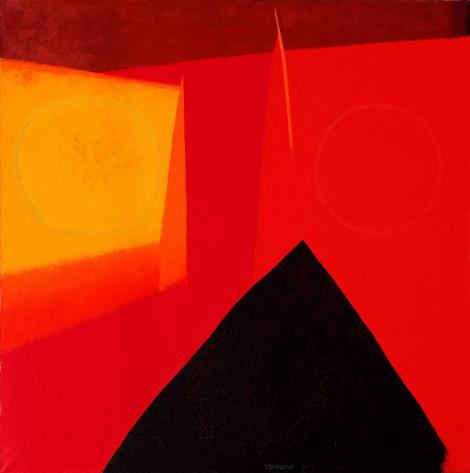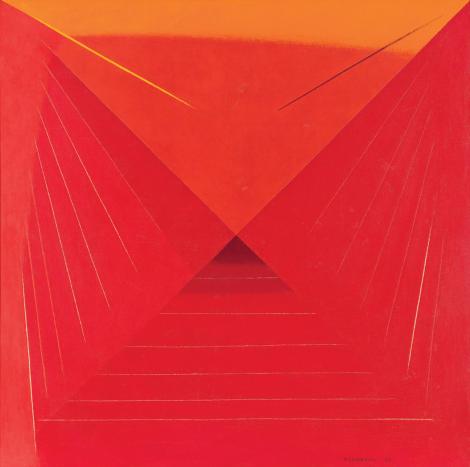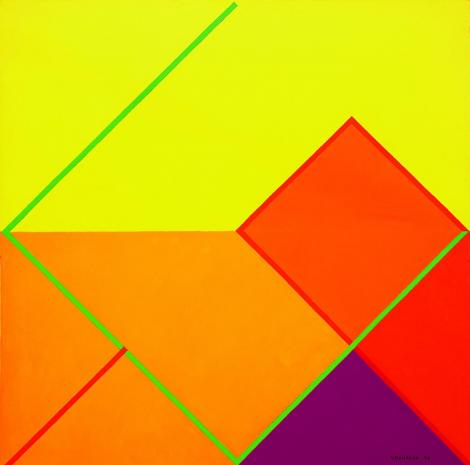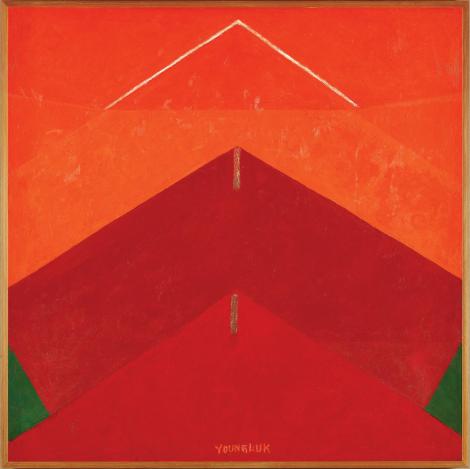 COLORS FROM NATURE | KUKJE GALLERY
COLORS FROM NATURE | KUKJE GALLERY
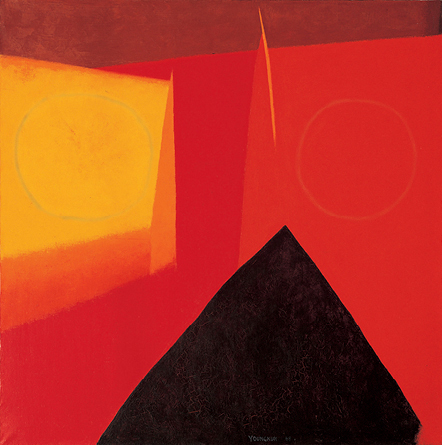
Sep 4, 2018 - Oct 21, 2018
INTRODUCTION
Yoo Youngkuk: Colors from Nature features fourteen oil paintings on canvas from 1964 and onwards, a period in which Yoo mastered his independent style, characterized by intense colors and the use of graphic, blocky compositions that suggest landscapes and fragmented bodies. One of Yoo’s most characteristic themes is the “mountain” motif, a subject he began to explore in the 1960s. This signature subject, depicted in varying perspectives and scales, hovers in a non-objective field of radiant tones and divided planes. Displayed collectively in K3, nine square paintings of varying sizes are rendered in fiery oranges and reds. As a loose series, these works together provide a rare opportunity to experience Yoo Youngkuk’s unique world of abstraction in its full maturity.
Yoo has described his work as “art [that] embodies a purely abstract state based on nature." The mountains in his work are not mere representations but active, visually embodied forms that consist of strong perspectival logic and layered rectilinear components. With triangles and apexes indicating the mountain and the circles suggesting the sun, the saturated and layered colors Yoo applies to the canvas with a knife demonstrate a sense of restrained abstraction that remains rooted in the landscape and emphasizes order. This use of geometry is a key element in the artist’s philosophy, reflecting Yoo’s belief in basic existential facts such as the dignity and freedom of human beings—values that resonate with his personal experience of the harsh realities of the twentieth-century modern Korean history.
Yoo’s unique compositional approach and formal techniques are based in his attempt to uncover a prototype of nature through composition, palette, and geometric forms; this search for an essence further highlights the artist’s desire to establish a “national art.” Yoo maintained an unshakable belief in the power of abstraction, using it to formulate a modernist view of civilization and history. Some of the seminal paintings included in the show, such as Work (1999), the artist’s final work included in the twenty-first exhibition of the National Academy of Arts, Korea, embody this core philosophy and focus on the Korean identity.
Beginning in the late 1930s, Yoo Youngkuk pursued his undergraduate studies in Tokyo. His artistic aspiration was to seek utopia through absolute abstraction—a goal informed by his experience of Japanese colonial rule. At the time, the avant-garde arts, utilizing non-traditional mediums, were flourishing in Japan under the influence of Western surrealism and constructivism. Through involvement with groups such as the Jiyu Bijutsuka Group of Japan (Association of Free Artists) and Dokuritsu-ten (Independent Art Association), Yoo Youngkuk corresponded with leading artists and critics of the Japanese avant-garde, held exhibitions, and explored the mediums of photography and relief, consolidating his interest in the two- and three-dimensionalities. In addition, Yoo experimented with photograms, close-ups, and montages, pushing beyond the limitations of traditional representation and embracing constructivist approaches including the quality of material, plasticity, and the value of objecthood. Although the artist encountered the formal language of Western abstraction during his studies abroad, it was far from a passive or unconditional acceptance. This distinction becomes clear when evaluating his evolution as a first-generation Korean modernist.
If studying abroad was a time for experimenting with new vocabularies and mediums, the post-war era was a time to challenge the dominant role of the conservative National Art Exhibition of Korea. Within the newly liberated country, Yoo advocated for a new philosophy of art that was freed from the existing conservative power dynamics. This response was inevitable as abstract art encountered the reality of Korean politics and traditional aesthetics, whose roots were in conflict with the modernizing impulses of art. Yoo Youngkuk approached this tension from an institutional perspective—attempting to establish a new movement in sync with the times, getting involved with groups such as the New Realism Group (founded in 1948) and the Modern Art Association (founded in 1956). However, following his first solo exhibition at the Special Gallery of the Press Center, a major event that did not occur until the artist was nearly fifty years old, Yoo began to increasingly concentrate on his own work—deepening the relationship between the graphic vocabulary of his paintings and the rest of the society. He did so by reducing the representation of the world into geometric forms and distilling nature into a stylized index of lines, planes, and colors. With this renewed focus, the absolute abstraction based on the geometric framework explored during his early period was gradually simplified to reflect the tension between aesthetic embodiment and Yoo’s equally strident championing of humanistic values. It is this balance that characterizes his “mature” style.
About the Artist
Born in 1916 in Uljin-gun, Gangwon-do (present-day North Gyeongsang-do), Yoo Youngkuk graduated from the Art Department at Bunka Gakuin University, Tokyo, in 1938. He was a professor in the Department of Applied Arts at Seoul National University from 1948 to 1950, and College of Fine Arts at Hongik University from 1966 to 1970, and served as the head judge of Western painting for and was on the committee of the National Art Exhibition of Korea. Yoo’s major solo exhibitions include 100th Anniversary of Korean Modern Master: Yoo Youngkuk 1916-2002 at the National Museum of Modern and Contemporary Art (hereafter the MMCA), Deoksugung, Seoul (2016), Invitational Exhibition of Yoo Youngkuk at the MMCA, Deoksugung, Seoul (1979), and solo exhibition at the Special Gallery of the Press Center (1964). He has also been widely exhibited in group exhibitions such as the Invitational Exhibition of Salon de Mai at Musée d'Art Moderne de la Ville de Paris (1978), 9th Tokyo Biennial (1967), 7th São Paulo Biennial (1963), and exhibitions of the Association of Free Artists in Tokyo (1937-1942). Yoo received the third class (“Bogwan”) of the Order of Cultural Merit in 1984, and the highest award from the Association of Free Artists in the group’s second exhibition (1938). His works can be found in the collections of major museums such as the MMCA, Korea; Seoul Museum of Art; Leeum, Samsung Museum of Art; and Gyeonggi Museum of Modern Art. Yoo Youngkuk passed away in 2002.
국제갤러리는 2018년 9월 4일부터 10월 7일까지 K2와 K3에서 «유영국의 색채추상»전을 개최한다. 한국의 자연을 점, 선, 면, 색의 기본 조형요소로 환원함으로써 김환기와 더불어 한국 추상미술의 거장으로 평가 받아온 작가 유영국의 작품을 소개하는 국제갤러리에서의 첫 개인전이다. 이번 전시는 작가의 동경 유학시절(1935-1943)부터 귀국 후 그룹활동에 주력한 시기(1948-1964), 그리고 1964년 신문회관에서의 첫 개인전 이후 ‘원숙기’에 이르기까지의 주요 작업 세계와 족적을 두루 담은 작품 24점으로 구성된다. 또한 일부 초기작을 포함, 유학시절 작가의 사진과 한국 추상미술의 시작을 알리는 각종 아카이브 자료들을 별도의 공간(K2 2층)에서 선보인다.
«유영국의 색채추상»전은 강렬한 색채와 유연한 구성을 특징으로 하는 유영국의 작업 중에서도 독자적인 스타일을 완성한 1964년 이후의 작품 14점을 선보인다. 특히 ‘산’이라는 모티프를 강렬한 색채와 분할된 면의 비구상적 형태로 형상화한 작품들이 대거 등장하는데, 그 중에서도 K3에서 전시된 황색과 적색의 정사각형 캔버스 작품 9점은 원숙기에 이른 유영국만의 추상세계를 경험하는 기회를 제공한다.
작가 스스로도 “자연을 바탕으로 하여 순수하게 추상적인 상태를 형상화한다”고 언급한 바 있듯, 그의 작품에 등장하는 산은 단순한 재현이 아니라 순수 조형요소를 빌려 구축한 적극적, 긍정적인 비전을 상징한다. 직선들과 꼭지점으로 형성된 삼각형은 산을, 원은 빛을 시사하는 가운데, 나이프를 활용해 캔버스에 더욱 밀착시킨 순도 높은 색채는 엄정하게 중첩된 기하학적 질서를 강조하는 절제된 추상 요소로 등장한다. 특히 이는 국가의 상실, 참담한 전쟁, 남북분단, 이데올로기의 갈등 등 20세기 한국 근대사를 구성한 역사적 현실과 조우하며 인간의 존엄성, 자유와 같은 절대성을 일깨운다.
더불어 이 방식은 구성적인 도형 속에서 자연의 원형을 발견하고, 그 본질을 찾고자 하며, 더 나아가 민족미술을 확립하고자 했던 작가의 비전이 철저히 구축적인 추상미술의 본질에서 탄생했음을 짐작하게 한다. 마지막 작품으로 기록된 1999년의 전시 제21회 «예술원 미술전»의 출품작 <작품>(1999)을 포함, 이번에 전시되는 주요 작품들은 이러한 유영국의 핵심적인 철학을 꿰뚫고 있다.
유영국은 1930년대 후반 일제에 의해 억압된 사회 분위기 속에서도 절대적인 추상을 통해 이상향을 지향하고자 한 예술적 열망에 힘입어 동경유학 길에 올랐다. 당시 일본은 서구의 초현실주의와 구성주의 문법의 영향 아래 다양한 탈회화적 매체를 활용하는 전위예술이 융성하던 시기였다. 유영국은 자유미술가협회, 독립미술협회 등의 그룹활동을 통해 일본 전위예술의 대표 작가들 및 비평가들과 교류하고 전시를 개최하는 동시에 3차원의 공간을 넘나드는 매체인 릴리프(부조)와 사진의 조형가능성을 탐구했다. 특히 포토그램, 클로즈업, 포토몽타주 같은 사진적인 기법을 통해 기존 회화가 지닌 재현의 한계를 넘어섰을 뿐 아니라 대상의 재질, 조형성, 양감, 곡선미 등에 초점을 맞추는 구성주의적 접근방식에 몰두했다. 작가가 유학시절 20세기 서구 조형의 산물인 추상 언어를 접한 건 사실이지만, 이는 수동적이고도 무조건적인 수용과는 거리가 멀다. 그가 한국 모더니즘의 1세대 작가로서 보여준 이후의 행보를 보면 이 사실은 더욱 분명해진다.
유영국에게 유학시절이 새로운 조형 언어를 습득하는 실험의 장이었다면, 해방 이후의 시대는 «국전» 권력에 맞서는 등 구태를 탈피하고 새로운 정신을 구현해내야 했던 과제의 장이었다. 이는 추상미술이 그것의 근원과는 이질적인 문화 기억을 가진 당시 대한민국의 현실과 조우하면서 자연스럽게 생겨난 문제의식이었다. 유영국은 신사실파(1948년 창립), 모던아트운동(1956년 창립)과 같은 그룹활동을 통해 새 시대에 맞는 사조를 정립하려는 제도적인 노력으로 작가 자신이 처한 당면과제에 접근했다. 그러나 1964년 지천명의 나이에 신문회관에서 연 첫 개인전을 기점으로, 그는 격동하는 세계와 주변 자연을 선, 면, 색 등의 기하학적 구조 및 질서로 환원함으로써 조형예술의 영역과 시대 및 사회의 관계를 내면화하고 심화하는 일에 주력했다. 이로써 기하학적 조형에 기반한 초기의 절대 추상은 점진적으로 인간과 사회라는 절대적 가치와 등가적 긴장관계를 조성하며 그만의 독자적인 회화 스타일로 확립되었다.
작가 소개
1916년 강원도 울진(현 경북 울진)에서 태어난 유영국은 1938년 일본 동경문화학원 유화과를 졸업하였다. 1948년부터 1950년까지 서울대학교 응용미술학과, 1966년부터 1970년까지 홍익대학교 미술대학 정교수로 재직하였고, «국전» 서양화 비구상부 심사위원장과 운영위원 등을 역임하였다. 주요 개인전으로는 2016년 국립현대미술관에서 열린 탄생 100주년 기념전 «유영국, 절대와 자유», 1979년 국립현대미술관 덕수궁관 개인전 «유영국 초대전», 1964년 신문회관 개인전 등이 있으며, 1978년 파리 시립현대미술관의 «살롱 드 메 초대전», 1967년 제9회 도쿄비엔날레, 1963년 제7회 상파울로비엔날레, 1937-1942년 동경 «자유미술가협회전» 등 수많은 그룹전에 참여하였다. 1984년 보관문화훈장, 1938년 제2회 «자유미술가협회전» 협회 최고상 등을 수상하였으며, 국립현대미술관, 서울시립미술관, 삼성미술관 리움, 경기도미술관 등에 주요 작품들이 소장되어 있다. 작가는 지난 2002년에 작고하였다.
WORKS
|
Work |
Work |
|
|
Work |
Thawing of the ground |
|
|
Work |
Work |
|
|
Work |
Work |
|
|
Work |
Circle-A |
|
|
Work |
Work (Lalala) |
|
|
Work |
Work |
|
INSTALLATIONS

|
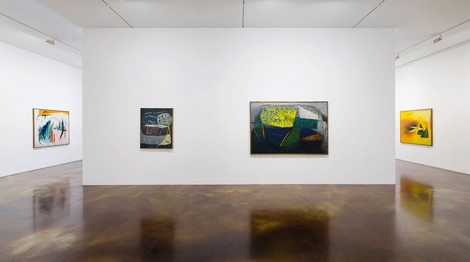
|
|
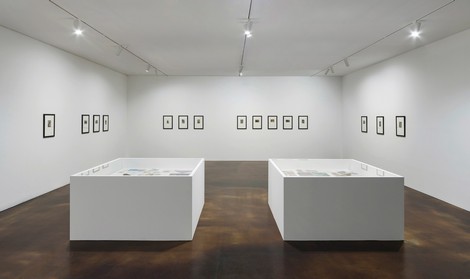
|
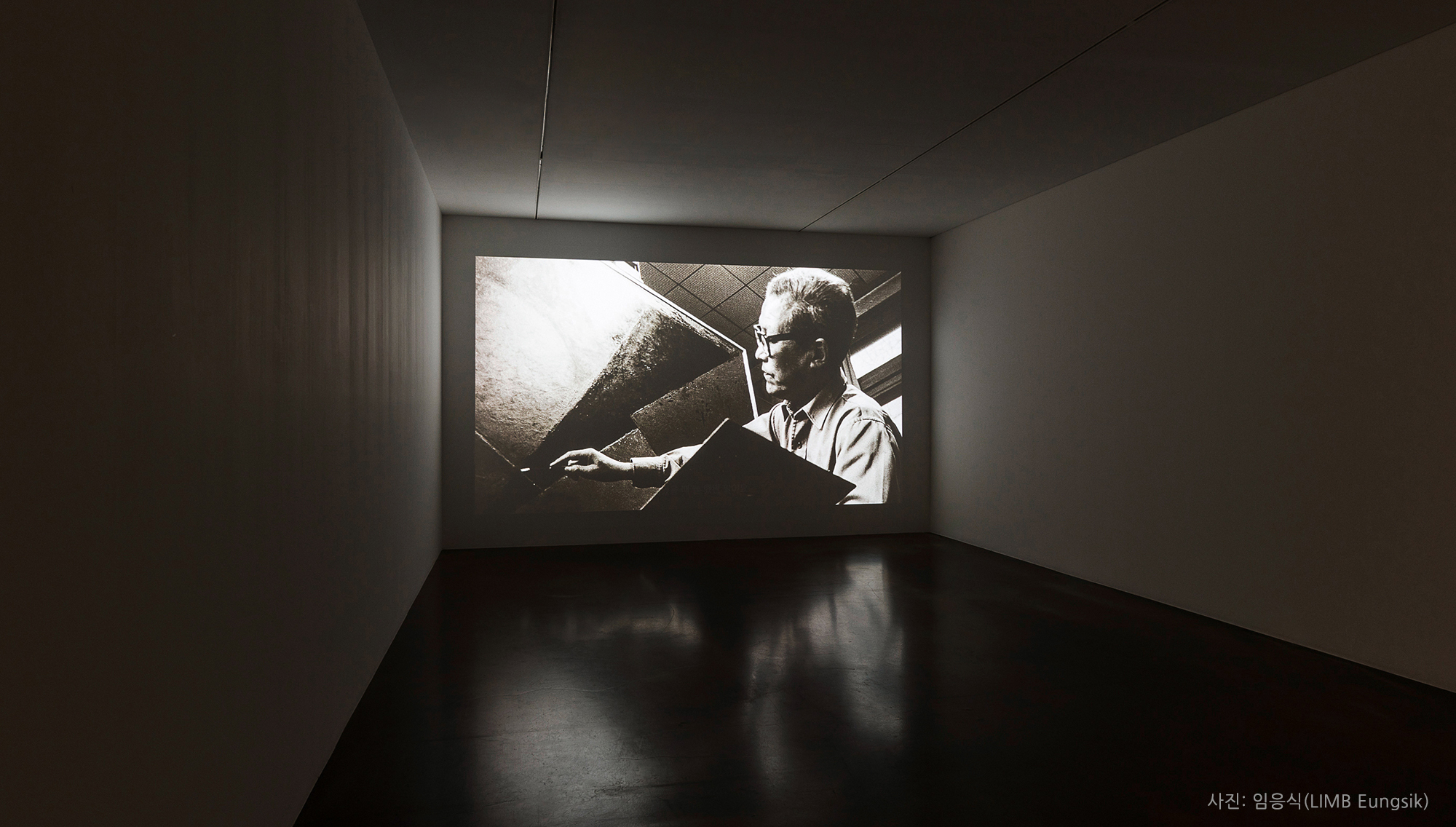
|
|
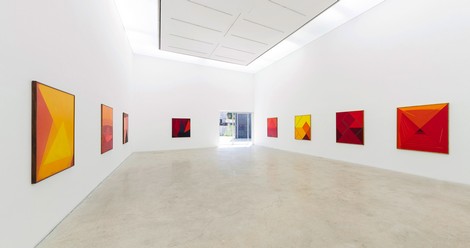
|
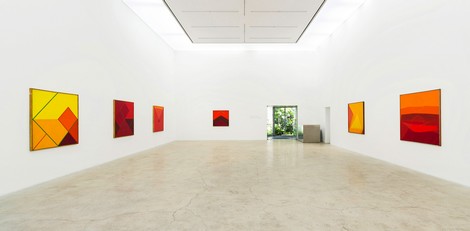
|
|
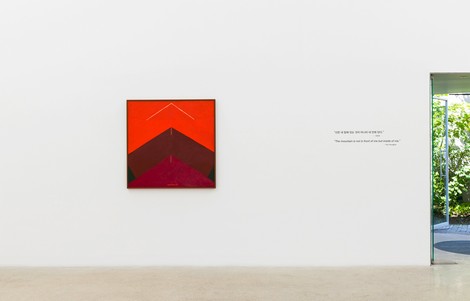
|
VIDEOS
|
Installation Video |
